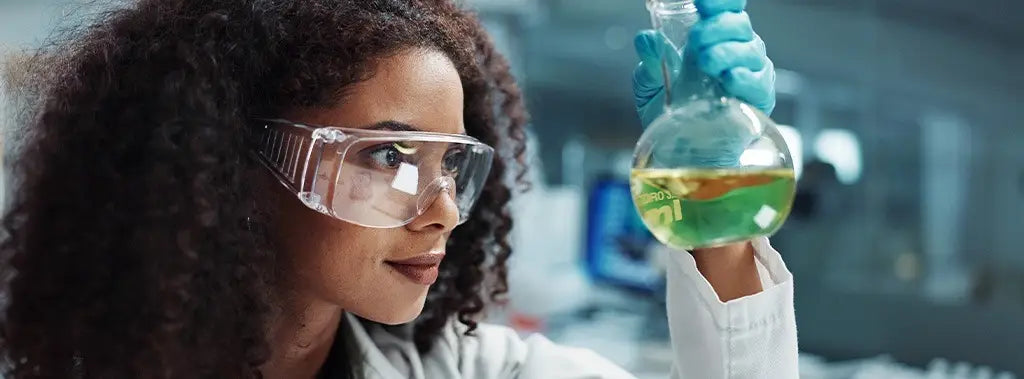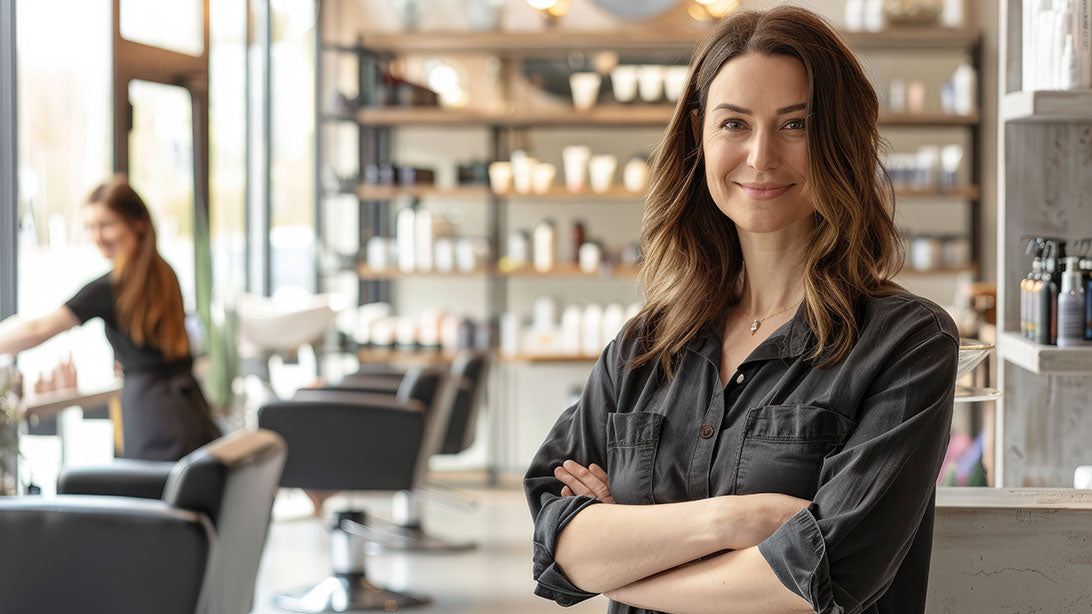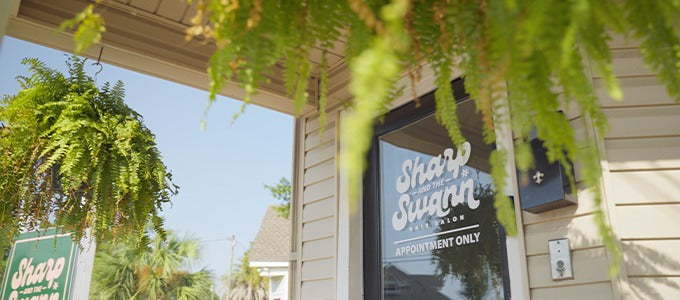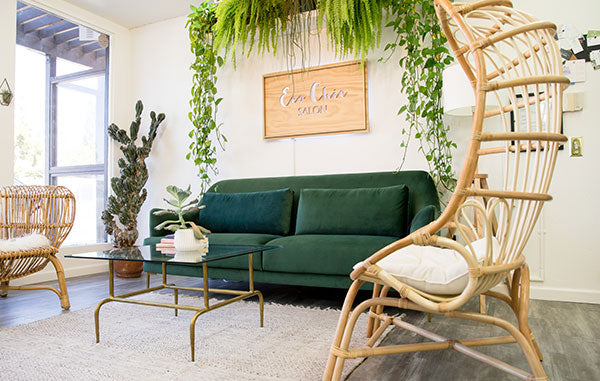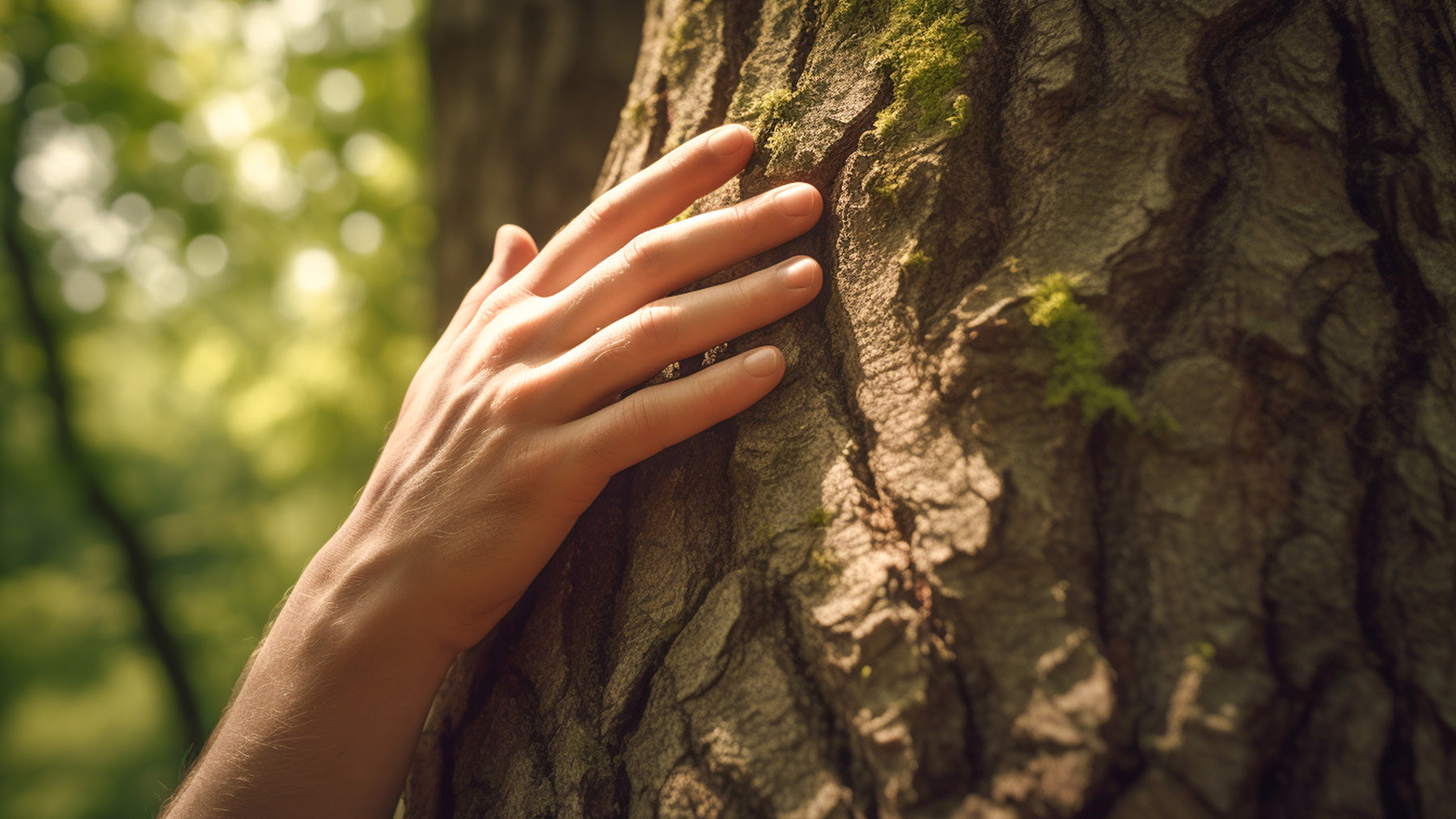We’ve scoured the medical journals and government-backed research here and abroad to find out those chemicals best avoided for your sake, your clients and your planet. None of these ingredients are banned everywhere in the US but many are banned or their use restricted in some way in Europe and other parts of the world to safeguard citizens. Want to add something to help your fellow professionals? Send us an email so we can keep this resource up-to-date!
Acrylates (ethyl acrylate, ethyl methacrylate, polyethylmethacrylate (PMMA) and methyl methacrylate)
What it might be in: artificial nails products
What exposure can do: The International Agency of Research on Cancer (IARC) and U.S. Environmental Protection Agency (EPA) classify ethyl acrylate as a possible human carcinogen. Also reports of rashes on eyelids, face and neck, breathing difficulties, throat irritation, headaches, birth defects, loss of concentration; skeletal malformations in rats; cell damage
Is it banned in beauty or cosmetics products in Europe: RESTRICTED; banned in Southern California.
Ammonia
What it might be in: hair dye, hair relaxers
What exposure can do: irritate eyes, skin and respiratory tract, asthma and other breathing difficulties, dermatitis
Is it banned in beauty or cosmetics products in Europe: NO
Ammonium Persulfate
What it might be in: hair bleach
What exposure can do: irritate eyes, skin and respiratory tract, asthma and other breathing difficulties, dermatitis and other allergies
Is it banned in beauty or cosmetics products in Europe: NO
Acetone
What it might be in: nail polish remover, hairspray
What exposure can do: skin irritation, throat irritation, dizziness
Is it banned in beauty or cosmetics products in Europe: NO
Dibutyl phthalate
What it might be in: nail polish
What exposure can do: eye and skin irritation, birth defects, nausea, dizziness
Is it banned in beauty or cosmetics products in Europe: RESTRICTED
ETHANOLAMINES: Monoethanolamine (MEA), Diethanolamine (DEA) and Triethanolamine (TEA)
What it might be in: as foaming agent in shampoos, soaps and cleanser, hair color, hair treatments
What exposure can do: identified as carcinogenic with links to liver tumors, bioaccumulation, organ system toxicity, allergic reactions, irritation of the eyes and skin
Is it banned in beauty or cosmetics products in Europe: YES
Formaldehyde (also known as Methanal, Methyl Aldehyde, or Methylene Oxide)
What it might be in: nail hardeners, nail polish, keratin hair treatments (produced as a gas when heated)
What exposure can do: serious irritation to the eyes, nose, and lungs. Identified as Hazardous Air Pollutants (HAPs) by the U.S. Environmental Protection Agency (EPA); considered a human carcinogen by the IARC, the U.S. National Toxicology Program (NTP), the U.S. Environmental Protection Agency (EPA), and the Occupational Safety and Health Administration (OSHA)
Is it banned in beauty or cosmetics products in Europe: YES
Glyceryl Monothioglycolate
What it might be in: used in permanent wave (perming) solutions. The use of glyceryl monothioglycolate is known as an acid perm. Glyceryl monthioglycolate contains no ammonia, hence this type of perm is not associated with the smell that alkaline perms have.
What exposure can do: People working with glyceryl monothioglycolate can develop allergic contact dermatitis. Often exposure is much less intense and frequent for clients, however the chemical can remain active in hair shafts for months and can cause long-lasting dermatitis in rare cases.
What it might be in: lipsticks, eyeliner, foundations, sun screen, nail color What exposure can do: linked to reproductive, immune, and nervous system toxicity. Is it banned in beauty or cosmetics products in Europe: LEAD – YES, NICKEL - RESTRICTED What it might be in: artificial nails; fragrance What exposure can do: skin irritation, breathing difficulties, loss of concentration Is it banned in beauty or cosmetics products in Europe: NO What it might be in: pretty much everything to extend shelf life What exposure can do: mimic estrogen, leading to disruption of normal hormone function Is it banned in beauty or cosmetics products in Europe: RESTRICTED; however the following five have been banned in Europe: isopropylparaben, isobutylparaben, phenylparaben, benzylparaben, and pentylparaben What it might be in: hair dye, skin tattoos What exposure can do: allergic reactions (life threatening); immunotoxicity Is it banned in beauty or cosmetics products in Europe: NO What it might be in: skincare, anti-aging products, exfoliates What exposure can do: According to Environmental Protection Agency, is highly irritating to the skin, eyes, and mucous membranes in humans after acute (short-term) inhalation or dermal exposures. Can be toxic. Is it banned in beauty or cosmetics products in Europe: YES What it might be in: fragrances, nail polish, hair spray, shampoos and cleansers What exposure can do: carcinogenic, linked to developmental and reproductive issues; increases chances of type 2 diabetes; lowers sperm concentration and mobility; asthma, breast cancer, obesity Is it banned in beauty or cosmetics products in Europe: YES, since 2020 What it might be in: lotions, creams What exposure can do: ages skin, allergic reactions, liver and kidney damage Is it banned in beauty or cosmetics products in Europe: NO, but to meet worldwide demand requires 1 million tons of petroleum each year What it might be in: skin care, used for thickening and emulsifying, washing machine pods What exposure can do: Not fully biodegradable so pumps microplastics into water sources. Is it banned in beauty or cosmetics products in Europe: NO, but New York is currently looking at a further ban on washing pods that if passed will come into effect in 2026. What it might be in: nail varnish, sunscreen, body wash, shampoo and eyeliner What exposure can do: trouble concentrating and tiredness along with vision problems; carcinogenic; impact on gastrointestinal; irate eyes, skin and upper respiratory tract. Is it banned in beauty or cosmetics products in Europe: YES from Nov 2025 What it might be in: used as foaming agent in shampoos, cleansers What exposure can do: eye and scalp irritation Is it banned in beauty or cosmetics products in Europe: RESTRICTED What it might be in: used as foaming agent in shampoos, cleansers What exposure can do: derived from SLS but considered less harsh Is it banned in beauty or cosmetics products in Europe: RESTRICTED What it might be in: nail varnish, nail glue, hair dye, wig glue What exposure can do: eye and nose irritation, tiredness, confusion, euphoria, dizziness, headache, dilated pupils, tears, anxiety, muscle fatigue, insomnia, nerve damage, inflammation of the skin, and liver and kidney damage. Is it banned in beauty or cosmetics products in Europe: RESTRICTED What it might be in: antimicrobial to stop bacteria growing in some hand soaps, body soaps/shower gels, face powders, blemish concealers What exposure can do: endocrine disruption, bioaccumulation, and the emergence of bacteria resistant to antibodies and antibacterial products; skin irritation, contact allergic dermatitis Is it banned in beauty or cosmetics products in Europe: RESTRICTED What it might be in: synthetic fragrances What exposure can do: headaches, dizziness, weakness, irritability, vomiting, and impaired reaction time Is it banned in beauty or cosmetics products in Europe: RESTRICTED Limiting your exposure to chemicals is the best strategy to reducing the risks to your health. Read more on ways to reduce your exposure to the chemicals most commonly found in beauty salons.Lead and Heavy Metals
Methyl Ethyl Ketone
Parabens (preservative)
P-phenylenediamine (PPD)
Phenol (also known as hydroxybenzene)
Phthalates (phthalic acid)
Propylene glycol (petrochemical)
PVA (Polyvinyl alcohol) – microplastic
Styrene (nano styrene)
Sodium Lauryl Sulphate (SLS) - often sourced from Petrochemicals
Sodium Lauryl Sulphate (SLES) , most often sourced from Petrochemicals
Toluene (also known as methylbenzene or phenylmethane)
Triclosan
Xylene

